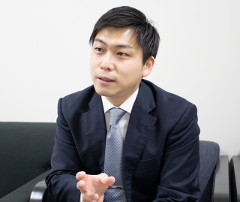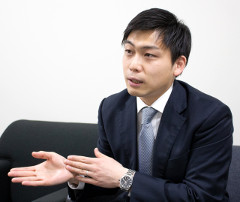America’s immigration history is also economic history

If we study the history of American immigration and workers, we can see how President Trump’s current policies aiming to restrict immigration will affect America going forward. Moreover, this is in no way someone else’s business: there are a great many lessons here for Japan.
America is a country that was built by immigrants in the first place, and almost no restrictions were placed on immigration until the end of the nineteenth century. In the nineteenth century, the transport revolution took place. Transportation costs were lowered by the introduction of railroads and steamships, among others, and the “age of mass migration” began as a result, leading to the globalization of the world. America was the destination of the largest number of migrants.
Migration to America reached its peak from the end of the nineteenth century to the twentieth century. Migration of Japanese people increased; but the most significant change was that migration from the traditional source countries of northern and western Europe, such as Britain and Germany, was overtaken by a large-scale influx of immigrants from eastern and southern Europe, such as Italy and Russia, in a short period of time. Absorbing European immigrants into America’s industrial society became the driving force behind the birth of the world’s leading industrial power. We can say that the development of the American capitalist economy was due precisely to this supply of labor in the form of immigrants.
On the other hand, it was certainly not the case that these immigrants were able to fit smoothly into American society. The former immigrants from northern and western Europe formed the WASP (White, Anglo-Saxon, Protestant) social class. Although the new immigrants from southern and eastern Europe were also white, friction arising from differences in religion and culture developed between them and the earlier immigrants.
Furthermore, the WASP class, who feared that their own position might be threatened by an increase in immigrants, made ever stronger moves to restrict immigration. Labor unions were at the center of this movement. To the labor unions, new immigrants appeared as competitors who would lower their wage levels, worsen their working environments, and bring about job losses.
As a result, the Quota Immigration Act, which included separate quotas for each country of origin and classified entrants to the country according to their place of origin and their individual qualities, was enacted in 1924. Under this Act, Japanese were designated as foreigners who could not be naturalized, and there was a de facto ban on immigration by Japanese people. For these reasons, it is generally known as the Japanese Exclusion Act.
It was after the World War II, in 1965, that this Immigration Act was revised and the system of separate quotas for each country of origin was abolished. At that time, in response to a demand for labor from industry, priority categories were established for skilled workers, and the number of immigrants from Asia increased rapidly. During the Cold War, as the competition for human resources between the U.S and the Soviet Union intensified, the country also become positive towards accepting immigrants.
If we look at America’s history of immigration, then, we see that the country’s economy grew while accepting migrant workers from around the world, responding to the demand to expand the labor force. On the other hand, when various tensions caused by the flow of migrants mounted, and the labor force became saturated, momentum grew to restrict or exclude immigrants. Therefore, we can look at the history of America’s immigration policy as one aspect of the history of the capitalist economy itself.
Excessive immigration restrictions will lead to the loss of American predominance
The stance of the Trump administration towards immigrants in the last few years has been extremely xenophobic. It has been particularly strict towards illegal immigrants (also known as “unauthorized immigrants” or “undocumented immigrants”) of Hispanic origin, symbolized by the “Trump Wall” to be built along the border with Mexico.
However, President Trump himself may perhaps be aware that this is unrealistic. At the least, he has surely heard that the construction of a wall is an ineffective means of preventing the flow of immigrants.
Despite this, when President Trump insists that illegal immigrants are stealing the jobs of white workers, workers such as those in the “Rust Belt”, from the manufacturing and steel industries on which America’s former prosperity was built, go wild. Immigrants have become the target against which they direct their discontent at having lost their middle-class status. This scapegoating of immigrants has taken place repeatedly throughout history.
Nevertheless, these days, when the industrial structure has been transformed by globalization, mechanization, and the development of IT, excluding immigrants will not lead to the revival of industry within America. His speech and actions appear to be, in large measure, a performance designed to arouse his supporters.
It is certainly a fact that foreign workers, including illegal immigrants, work in the agricultural, service, and other industries for wages lower than could be acceptable to American workers. However, it is thanks to this that the prices of America’s agricultural products can be kept down, keeping them highly competitive internationally. It has been estimated that if those considered illegal were deported, total sales of agricultural products would fall by as much as 15%, and food prices within America would rise by 5% – 6%.
In other words, in reality, the economy is structured in such a way that America’s agriculture would suffer a severe blow without illegal immigrants, risking a negative impact on the daily lives of Americans. Therefore, should these very workers be given legal status to stay and work for a limited period, in the same way as under the Bracero Program in the past?
Moreover, another aspect is that in recent years, highly skilled migrant workers from India, China, and other parts of Asia are the backbone of giant IT companies like GAFA. India, in particular, has been nurturing IT engineers as a kind of national policy, centered on the Indian Institute of Science and Indian Institutes of Technology. As former British colonial subjects, Indians are proficient in English, and India, which enhanced its engineering education based on models such as MIT, is a veritable reservoir of talent.
However, President Trump has also made moves to restrict highly skilled migrant workers, such as announcing a policy of stricter standards for the issuing of visas to foreigners with specialist skills. These moves may also appeal to the Trump administration’s supporters, but if such restrictions are actually implemented, they risk inflicting a major blow on the IT companies which are currently America’s driving force. In fact, GAFA is said to be extremely concerned.
The results of research in economics and economic history show us that in the majority of cases, Americans have received net positive economic benefits from immigration. America has been able to take in young workers without shouldering the costs of their education and development. In addition, a growth in the number of immigrants, who become consumers, stimulates demand, which acts to increase jobs. It is hard to think that immigrants steal jobs: almost no correlation can be observed between immigration and unemployment.
Having said this, it is not the case that this wealth reaches all people equally and, in the short term, some people may suffer losses. Moreover, the benefits generated by immigrants are hard to see, but the losses are easily made visible. In my opinion, it is important to build a structure to return the economic benefits obtained from immigration to society as a whole, rather than having them monopolized by a few beneficiaries.
Whatever the case may be, for America, which has accepted immigrants in response to demand for labor, restricting immigration despite high demand will cause the American economy to lose its international predominance. In recent years, countries such as China and Singapore have been accepting a large number of international students: the competition for talent has already begun. As we enter the age of AI, the acquisition of the most talented information and communications technology professionals is expanding globally, and America cannot afford to continue resting on its laurels.
What Japan can learn from America, a nation of immigrants

Why, on the other hand, would people seek to migrate to America, despite restrictions and friction? The reason is that America is sufficiently attractive.
The migrant workers of the eighteenth and nineteenth centuries had the dream of owning their own land and becoming independent farmers. Furthermore, wage levels were high. There were opportunities to make one’s fortune and better one’s social position through one’s own efforts, to a degree that was unimaginable in Europe.
Today, too, wages in America are relatively high. For example, for Hispanic immigrants, the wages they can earn in America may be five to ten times higher than those in their home countries. The same is true for highly skilled workers from India. In a global capitalist economy, these kinds of attractive features appeal to people, and so it is natural that they promote the migration of people.
Turning to Japan, then, what do we find here? The decline in the birthrate and aging of the population are advancing, leading to a rapid decline not only of the population as a whole, but of the working age population. Also, Japan cannot keep going without foreign workers. Until now, third-generation Japanese descendants from Latin America and foreign workers using the Technical Intern Training Program have filled the gap in the labor force. A new residency status, “Specified Skilled Worker”, has also been established, but the number of people using this type of visa is still low, and so it is difficult to say that it is functioning. As you can tell by looking at convenience stores or bars, foreign workers, mostly from Asia, have already arrived in Japan, but will this situation actually continue?
Wages continue to rise not only in China, but also in the steadily growing economies of Southeast Asia. Will Japan be able to go on paying higher wages than these? Also, will immigrants be able to work their way up within Japanese society?
There is also the language barrier. Compared with English, Japanese poses a much greater hurdle. We are forced to say that in the medium to long term, the relative merits and attractiveness of migrating to and working in Japan will fall.
Of course, there are also many problems with America’s immigration policy. Nevertheless, the immigration history of America, which has continued to attract migrant workers despite various frictions and conflicts, surely shows us that Japan needs to offer similar attractions.
For this, not only the enhancement of policies for the acceptance of foreign workers but also worker skills development, such as Japanese language education and advance training, will be important. We also need to deepen our knowledge of Japanese and overseas culture and history, building a society based on coexistence. Since our country is one of the global leaders in terms of safety and security, we surely need to tell the whole world about the attractive features of Japan.
At present, protectionism and a focus on “putting one’s own country first” are on the rise in America and around the world. This tendency may accelerate after the coronavirus shock. However, history tells us that isolation from the world leads to misfortune. In my opinion, countries which develop bring together people from around the world, and have the tolerance to accept them.
It is necessary to build constructive policies based on objective facts, without being swayed by emotive arguments.
* The information contained herein is current as of June 2020.
* The contents of articles on Meiji.net are based on the personal ideas and opinions of the author and do not indicate the official opinion of Meiji University.
* I work to achieve SDGs related to the educational and research themes that I am currently engaged in.
Information noted in the articles and videos, such as positions and affiliations, are current at the time of production.

